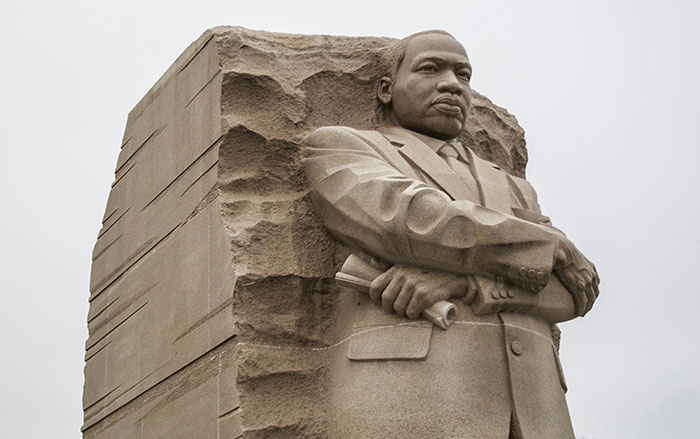City hosts County Supervisor Barger

Los Angeles County Fifth District Supervisor Kathryn Barger and Claremont City Manager Adam Pirrie at Tuesday’s meeting in the council chamber. Courier photo/Andrew Alonzo
By Andrew Alonzo | aalonzo@claremont-courier.com
The Claremont City Council hosted Los Angeles County Fifth District Supervisor Kathryn Barger Tuesday morning for a two-hour conversation that touched on several local issues.
Talking points were chosen by the council and staff, based on issues that have arisen throughout the year related to county projects taking place in or near Claremont.
The meeting began with public comment. Pamela Casey Nagler asked Barger to join LA County Second District Supervisor Holly Mitchell in calling for an immediate cease-fire in Gaza and for the release of hostages; Russ Binder suggested Claremont make its current housing more affordable in addition to providing high paying jobs; Douglas Lyon asked Barger how the public can get rid of LA County District Attorney George Gascón; Randy Lopez told Barger that Claremont is experiencing growing pains in terms of expanding businesses and population numbers; and Ludd Trozpek asked Barger to explain why the bill for the 2023 Claremont Unified School District Trustee Area 4 special election was $490,387.
After public comment, Barger and the City council began discussions.
County airport land use compatibility plan
While Los Angeles and San Bernardino counties each have airport land use compatibility plans that apply to lands surrounding airports, City Manager Adam Pirrie said Claremont is in a unique position with Cable Airport since the LA County City of Trees abuts the airport, which is located in San Bernardino County.
When San Bernardino updated its airport land use compatibility plan in 2015, it did not include guidance on land use in Claremont, and LA County’s plan cannot apply to areas surrounding the San Bernardino airport, despite the runway extending into LA County. It’s no surprise that developers want to build around the vacant space in Claremont that surrounds Cable Airport, but recent projects have stalled over the years due to the absence of a plan that satisfies Claremont’s unique situation.
Amy Bodek, director of LA County Regional Planning, explained the county can go about updating its land use compatibility plan for Cable Airport in one of three ways: adopting San Bernardino’s plan as is, adopting but tweaking it in consultation with Claremont, or updating its entire airport land use plan to cover such unique airports. No matter which plan is adopted, Bodek said a California Environmental Quality Act analysis will be required.
While funding is there to update the airport land use plan, Bodek said she expects to have a contract in place with a California-based airport land use consulting firm in the next two months. In the meantime, plans for land development can still be reviewed by the county supervisors office.
10 Freeway
Three topics were discussed: the construction of a sound wall along the Indian Hill Boulevard 10 Freeway exit to protect the neighborhoods below, drainage of runoff water at the adjacent Motel 6, and underpass expansion work at the Indian Hill Boulevard exit.
While sound walls are not usually built near commercial businesses, Barger told the council that the concerns have been heard and moved up in the supervisors’ queue of projects. If approved, it would still take a considerable amount of time before ground was broken on that project, she added.
Barger also expressed serious concerns with the overall capacity of the Indian Hill Boulevard underpass at the I-10 since express lanes are set to be added to a significant stretch of the freeway through Claremont. She said she will revisit the issue with Caltrans and Metro at a later date.
In terms of Motel 6 drainage, Andrew Dale of Caltrans said his department recently greenlit a project to modify the freeway’s drainage path in order to mitigate about 70% to 80% of the water that is currently making its way onto the Motel 6 property. Motel 6 does not have a sufficient system to divert the freeway water into Claremont’s drainage tunnels, Dale added.
Medina questioned Dale about overlapping costs between Caltrans and Motel 6. Dale said there has been no direct involvement with Motel 6 as of yet since the project is still in early stages. When Barger asked about rerouting the other 30% of the water, Dale said that rerouting 100% of the water would require a 45 yearlong project to overhaul the diversion system. Dale hopes the project can get underway sometime next year to provide immediate benefit versus a decadeslong overhaul. Cost figures were not provided.
Open space acquisition and preservation
Barger and her team will continue to look into ways the county can help Claremont acquire a privately owned 103-acre parcel of the Claremont Hills Wilderness Park known as Clara Oaks, and improve access to the public.
Gold Line safety
The Metro Gold Line Foothill Extension Project is nearing its 2025 completion that would see the cities of Glendora, San Dimas, La Verne and Pomona connected via a high speed light railway system and added to the Metro Gold Line track system that runs from Azusa to Union Station in Downtown LA.
While the Metro Gold Line Foothill Extension Construction Authority has proposed an extension project connecting Pomona, Claremont, and Montclair to the system, funding remains up in the air for that portion of the project. Officials such as Barger and City Council member Ed Reece, chair of the construction authority, hope to have the additional extension online by 2030.
Safety is a major concern for those who ride the Gold Line, Barger said.
“We are moving forward with both the Sheriff, LAPD and Long Beach [Police] on looking at what future security needs of Metro are and what that will look like,” she said. “But there’s no question in my mind that safety is first and foremost.”
Reece said Claremont Police will be contacted to coordinate a safety plan when the project makes its way to the City of Trees.
Brush clearance inspection program
LA County Fire Department Deputy Chief Albert Yanagisawa, who is responsible for the department’s prevention services bureau, said his team recently sent out brush clearance inspection notices ahead of an April 1 inspection start date. In 2024, 1,345 parcels in Claremont were deemed high fire zones.
“Our goal is to complete just over 129,000 inspections [countywide] before fire season which traditionally for us is when the Santa Ana winds start in late August, early September,” Yanagisawa said. “Your residents may be concerned with the large increase in the number of parcels within the City of Claremont. The updated maps and the criteria for all of the county of Los Angeles were increased so many, many residents are receiving those declaration notices, or annual brush clearance notices, that we associate with these [inspections] for the first time this year. The entire purpose of this program is to make sure that the residents are safe, not only their parcels and structures, but the person that’s living on each side of them, and in front of them and behind them.
“Residents are going to see this hitting and the amount is $50 to be billed on the 2023 property tax, and then 2023 is going to be $100 to be billed on the 2024, and then in 2024 the bill will be $151 to be billed on the 2025 property tax,” Barger added. “The residents are going to feel this.”
Yanagisawa and his team have put an emphasis on overcommunication with social media blasts and emails being sent out to ensure first timers are aware of upcoming inspections. Additional info is at ci.claremont.ca.us/living/fire-services/fire-prevention.
When councilmember Cory Calaycay commented that the current fire map of Claremont looks as if it were gerrymandered, Yinesou assured the map was drawn using a combination of science, expert input, and geographic information systems technology.
Base Line Road bike lane
Claremont is hoping to work with LA County and the City of La Verne to create the Base Line Road Regional Bike Lane project, which aims to create a continuous designated bike lane connecting the cities, Pirrie explained.
Two things need to occur before the project can break ground: one, roadway used for the project would need to be relinquished from Caltrans to the county, and two, the county will need to update its bicycle master plan, which last saw a refresh in 2012. Barger and her staff are working to accomplish both.
The new master plan is set revise a number of bikeways, add language regarding class IV bike lanes (bike lanes with rider protection features), and add bike design guidelines into the final plan, which staff hopes to deliver to the Board of Supervisors by summer 2025.
Items not on agenda
Council member Calaycay expressed concern regarding the cost of elections. Council member Jennifer Stark said the rules regarding the financing of special elections need to be revisited. Reece and Calaycay said street vending requirements and food safety protocols should be reexamined. Lastly, Council member Jed Leano reminded Barger that the state “needs to formulate how to withstand those changes” brought about by the recently enacted Community Assistance, Recovery and Empowerment Court plan, aimed at helping Californians suffering from untreated mental health and substance use disorders, and Proposition 1, the $6.38 billion bond measure voters narrowly passed on March 4.








0 Comments